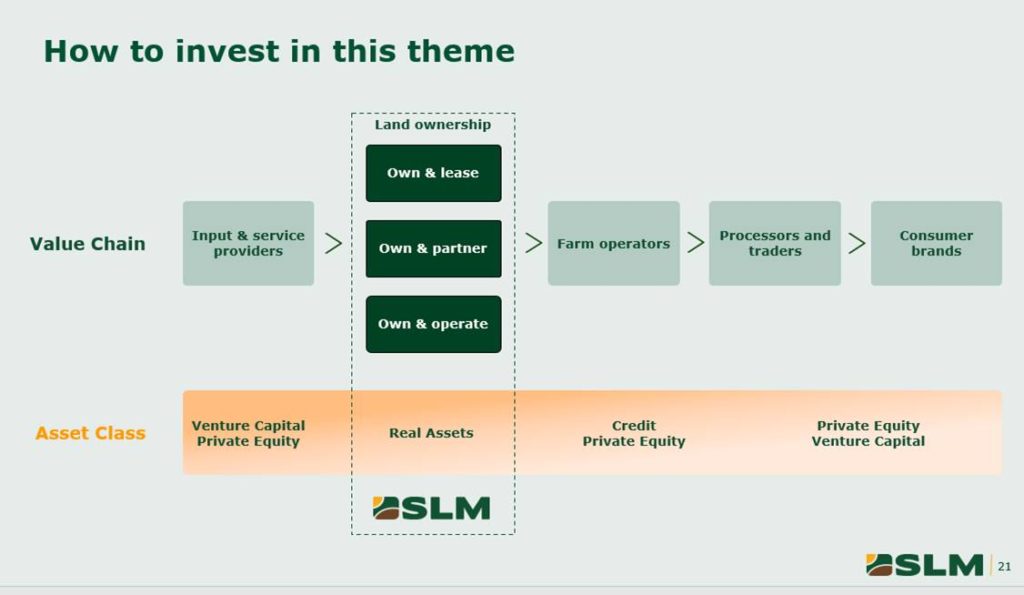There are few who have been advocating for capital investment in ecological and regenerative farming as long as Paul McMahon of SLM Partners, and while he claims this makes him sound old, we think it only emphasizes his deep expertise. Founded in 2009, SLM Partners has invested in land transformation in Australia, Europe, and the U.S. and today has $435 million of assets under management. In the first Regenerative Food Systems Investment Europe event in January, Paul had the opportunity to share some foundational insight on investing in regenerative food systems – setting the stage for the all-day program and offering a primer for anyone curious about the role of capital investment along the regenerative value chain.
In SLM Partners’ investment journey, one of the clearest lessons has become the central importance of the farmer. Paul explains that as investors, it’s their job to find the right farmers and help equip them with resources they need to grow and expand regenerative practices. “By expanding,” he says, “we believe they will demonstrate to the broader farming community that this stuff works and then you get more adoption, and that’s our theory of change.”
Paul also shared a clear and concise explanation of how and where investors can participate in the regenerative agriculture ecosystem, from investment in companies that serve farmers, to investment in land and farmers, all the way to consumer brands. He explained that along value chain, we’ve seen enormous attention, hype, and activity in companies that provide inputs and services for the farm, areas like biologicals. Companies like these are often funded primarily by venture capital for start-ups and private equity for more established companies. In contrast to this, he pointed to the challenges of funding farm operators because of the familial nature of many operations, which makes some forms of capital far less appealing. Debt, however, does lend itself better to farm operations and that’s why we see more creative lending vehicles arising in the ecosystem. When it comes to processing, marketing and trading – an area that farmers are not always keen to take on – we see a larger gap in funding. Here, there is significant opportunity for growth in investment.

Paul closed by explaining the opportunity for real asset investment in land – SLM Partners’ sweet spot. There are a lot of reasons that investors might want land in their portfolio – to protect against inflation, for capitalization, and to diversify their portfolio, among other reasons. There are also several different models for land ownership within a real asset strategy, including own and lease, own and partner, and own and operate models. Most importantly, he explains, “We think we can harness that financial imperative but then steer it in a more impactful direction by making sure it’s going to regenerative organic farmers.”
Listen to all the details in Paul’s presentation here, including:
- SLM Partners’ theory of change.
- How and where investors can participate in the regenerative agriculture ecosystem.
- Why investors want land in their portfolio and how we can steer it toward impact.
Interested in viewing the entire event for free? Register here for access.
